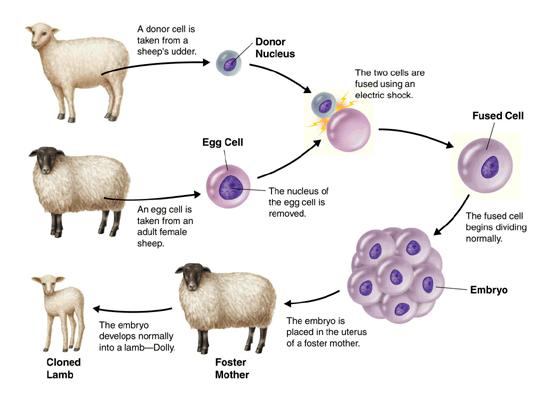Applications of Genetic Technology
By Rita Debbaneh
Animals: Animals can be genetically modified, in order to be hardier or produce more products. For example, cattle can be enhanced to be stockier and produce more meat. Or the genes of a fish can be altered so it may glow in the dark, or the silk-making gene of a spider can be placed in the DNA of a goat.
Agriculture: When insects are attacking a farmer's crop and they spend a large yearly sum on pesticides, a company can produce a genetically-modified plant which can resist insects, because of a natural pesticide. This can also be used when a country has a nutritional deficiency in their main food staple. A company can modify a plant to make up for these shortcomings. Lastly, if a fuel company wants to sell ethanol with a higher percentage of energy, then they can use genetically-modified corn.
Biotechnology: The application of biological organisms in technology. The Human Genome Project was a revolution in science, and placed the U.S. in a leading position in biotechnology. The National Institutes of Health (NIH) and U.S. Department of Energy teamed together to sequence all 3 billion base pairings in the human body, starting in 1990 and ending in 2003.
Cloning: A popular example is Dolly the Sheep: an embryo was taken and its nucleus was extracted while the remains were discarded. Meanwhile, the embryo of another sheep was taken and its nucleus was discarded and replaced by the nucleus from the first sheep's embryo. This embryo, in turn, was placed in a completely different sheep, and that sheep gave birth to an exact clone of the very first sheep.
Designer Babies: Babies genetically modified when an embryo. This procedure is still an experiment, but the goal is to genetically modify the embryo so the life span may be longer, its intelligence higher, e.t.c. As of now, only the sex of the baby can be determined, but later on, there will be more options, like appearance and disease immunity.
Gene Therapy:
Gene therapy is when a faulty gene is replaced, in order to cure or prevent an illness. The cell will not accept a new gene inserted directly, so a carrier known as a vector is genetically engineered to do so. At times, a weakened virus can be used, because they can longer cause disease. The vector is usually injected or given through IV (through the veins). This procedure is still an experiment.
Pharmacogenomics: The study of how genes are affected by drugs and medicine. The Human Genome Project sequenced all 3 billion DNA base pairings in the human body, allowing scientists to gain a better understanding of the genetic factors of illnesses. Thanks to the HGP, a doctor or scientist can select the best medicine to treat the patient, based on their DNA and genetic factors.




